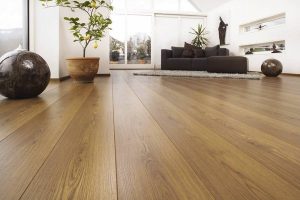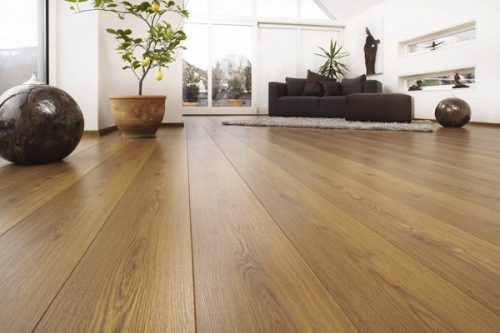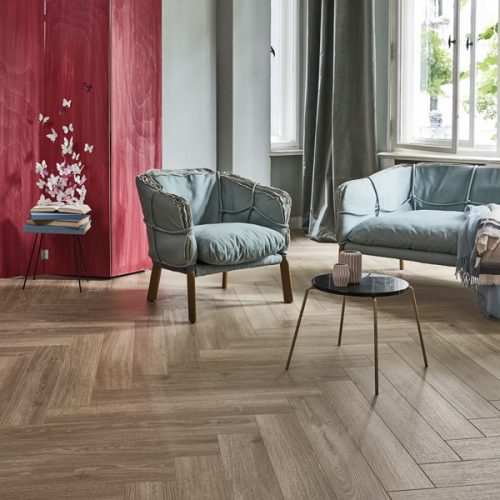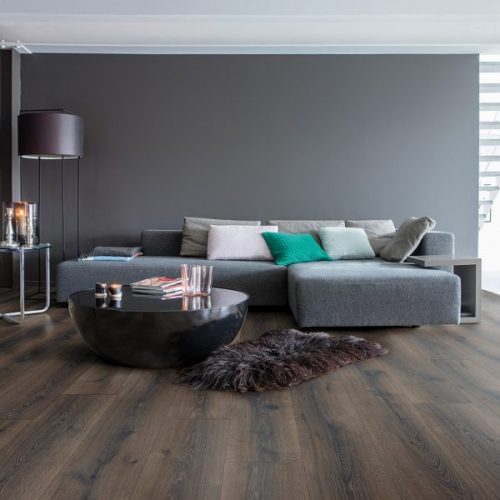What are the Disadvantages of Floating Wood Floors?

When choosing floors for a room or an entire house, you must be aware of both the pros and cons of each option. In this article, we’re going to share the disadvantages of floating wood floors so you can make a more informed decision. It’s certainly one of the most popular flooring options, along with laminate and parquet.
Often, it’s a bit difficult to distinguish between these floor types. This is why it’s important to know the characteristics of each. Also, you should remember that it’s normal to feel a little lost when it comes to choosing what floors to install in your home.
Floating wood floors have revolutionized the interior design world. They are undoubtedly one of the most popular floor choices nowadays. This flooring looks good in homes that want to look natural and homey.
Why? Well, first of all, because they can easily be installed on any type of base (provided it’s level). Furthermore, there are many different kinds of floating wood floors. The best part of all is that they’re all easy to repair. Finally, don’t forget that they withstand high temperatures.
However, everything has its disadvantages, and floating wood floors aren’t an exception. Read on to find out what they are!
Floating wood floors are noisy
Although this may seem unimportant, it’s something that can really bother you. When you step on these floors, you hear a sort of hollow sound. It’s even worse when you wear high heels. These shoes can even leave marks on the floor.
The only positive thing is that you can reduce the sound a bit. How? By using soundproofing materials. An example of this would be cork. There will still be noise, but not as much.

Low moisture resistance
Because of this, you must be very careful and not spill liquids on your floating wood floors. Therefore, you shouldn’t clean them too often and, when you do, you shouldn’t use a lot of water.
It’s very important that the boards are tightly sealed. This means moisture won’t affect them as much.
Without a doubt, these types of floors are perfect for any part of the house, including bathrooms and kitchens. The problem is that both spaces are prone to liquid spills.
Not only that, but you also have to think about the condition of the pipes. This is because any obstruction will affect the floors. The same goes if you have plants in your home. You must be careful when watering them.

If the water gets under the floorboards, it could cause cracks, deformations, bulges, or tears. Abrupt climate changes can also affect these floors.
Therefore, you should pay close attention to this to prevent future problems because it’ll be an inconvenience to have to change the floorboards later.
Gaps or cracks form easily
This will obviously depend on the quality of the material. The price will also affect this.
However, with the passage of time, it’s normal for gaps to form between the floorboards. Another problem is that the joints between the floorboards get dirty quite quickly.
The solution we suggest is to choose flooring that “clicks” together. With this type of floor, it will be harder for crumbs or other debris to get in between the joints. In addition, this “clicking” system is very simple, so you’ll have no trouble installing the floors yourself.

For the boards to really hold together, everything must be level. Otherwise, you must purchase and apply a self-leveling compound. You must also take into account possible expansion due to humidity or temperature changes. Therefore, leave a few millimeters between each floorboard in case it expands.
In conclusion, you should take into consideration the disadvantages of floating wood floors before choosing to install them in your home.
When choosing floors for a room or an entire house, you must be aware of both the pros and cons of each option. In this article, we’re going to share the disadvantages of floating wood floors so you can make a more informed decision. It’s certainly one of the most popular flooring options, along with laminate and parquet.
Often, it’s a bit difficult to distinguish between these floor types. This is why it’s important to know the characteristics of each. Also, you should remember that it’s normal to feel a little lost when it comes to choosing what floors to install in your home.
Floating wood floors have revolutionized the interior design world. They are undoubtedly one of the most popular floor choices nowadays. This flooring looks good in homes that want to look natural and homey.
Why? Well, first of all, because they can easily be installed on any type of base (provided it’s level). Furthermore, there are many different kinds of floating wood floors. The best part of all is that they’re all easy to repair. Finally, don’t forget that they withstand high temperatures.
However, everything has its disadvantages, and floating wood floors aren’t an exception. Read on to find out what they are!
Floating wood floors are noisy
Although this may seem unimportant, it’s something that can really bother you. When you step on these floors, you hear a sort of hollow sound. It’s even worse when you wear high heels. These shoes can even leave marks on the floor.
The only positive thing is that you can reduce the sound a bit. How? By using soundproofing materials. An example of this would be cork. There will still be noise, but not as much.

Low moisture resistance
Because of this, you must be very careful and not spill liquids on your floating wood floors. Therefore, you shouldn’t clean them too often and, when you do, you shouldn’t use a lot of water.
It’s very important that the boards are tightly sealed. This means moisture won’t affect them as much.
Without a doubt, these types of floors are perfect for any part of the house, including bathrooms and kitchens. The problem is that both spaces are prone to liquid spills.
Not only that, but you also have to think about the condition of the pipes. This is because any obstruction will affect the floors. The same goes if you have plants in your home. You must be careful when watering them.

If the water gets under the floorboards, it could cause cracks, deformations, bulges, or tears. Abrupt climate changes can also affect these floors.
Therefore, you should pay close attention to this to prevent future problems because it’ll be an inconvenience to have to change the floorboards later.
Gaps or cracks form easily
This will obviously depend on the quality of the material. The price will also affect this.
However, with the passage of time, it’s normal for gaps to form between the floorboards. Another problem is that the joints between the floorboards get dirty quite quickly.
The solution we suggest is to choose flooring that “clicks” together. With this type of floor, it will be harder for crumbs or other debris to get in between the joints. In addition, this “clicking” system is very simple, so you’ll have no trouble installing the floors yourself.

For the boards to really hold together, everything must be level. Otherwise, you must purchase and apply a self-leveling compound. You must also take into account possible expansion due to humidity or temperature changes. Therefore, leave a few millimeters between each floorboard in case it expands.
In conclusion, you should take into consideration the disadvantages of floating wood floors before choosing to install them in your home.







